The Baja Stars USA Lucha Libre event at the Mujeres Brew House in Logan Heights. (Andrea Lopez-Villafaña / The San Diego Union-Tribune)
In a long-standing Mexican tradition, wrestlers don colorful, elaborate masks and costumes and engage in dramatic, athletic matches, making lucha libre accessible to families in San Diego
Lycra-clad wrestlers’ bodies slam thunderously onto a plywood floor ring, drowning out dozens of screaming fans who had packed into a Logan Heights brewery on a recent Saturday.
The crowd was there for a lucha libre — or free wrestling — match. Everyone was sitting on the edge of their seats as the night’s wrestlers, known as luchadores, prepared their finishing moves.
One moment a masked luchador named Puma Negro (or Black Puma) had the upper hand. He boomeranged his opponent onto the ring’s ropes.
But in a split second, the opponent, The King Rey Mysterio, grabbed Puma Negro and flipped him onto the ground.
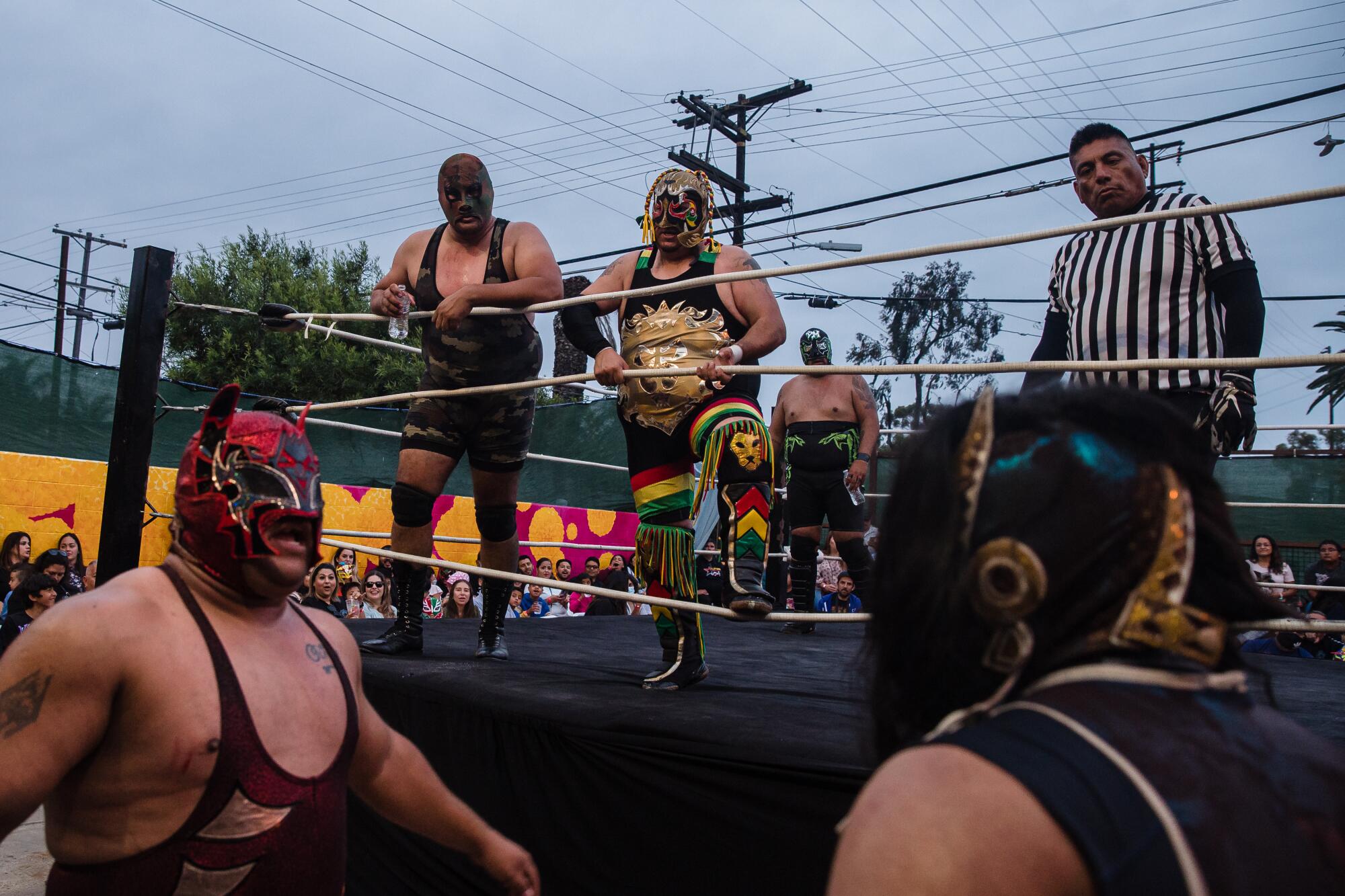

The crowd went wild. Fans sitting around the ring under the bright lights stood and cheered, some loudly shaking emptied water bottles that had been filled with beans.
They were yelling The King Rey Mysterio’s name.
“It’s beautiful, because the way fans support you is not something you find in every job,” said The King Rey Mysterio after the match.
Their shouts were also a sound of success to Enrique Avalos, owner of Baja Stars USA, the local promotions company responsible for the match.
He says his company is working to preserve lucha libre culture in San Diego while making it accessible to more families.
Recently the company moved its lucha libre events from an Otay Mesa recreation center, which has been closed to large events because of COVID-related restrictions, to a brewery in Logan Heights. It was a bid for survival, he said.
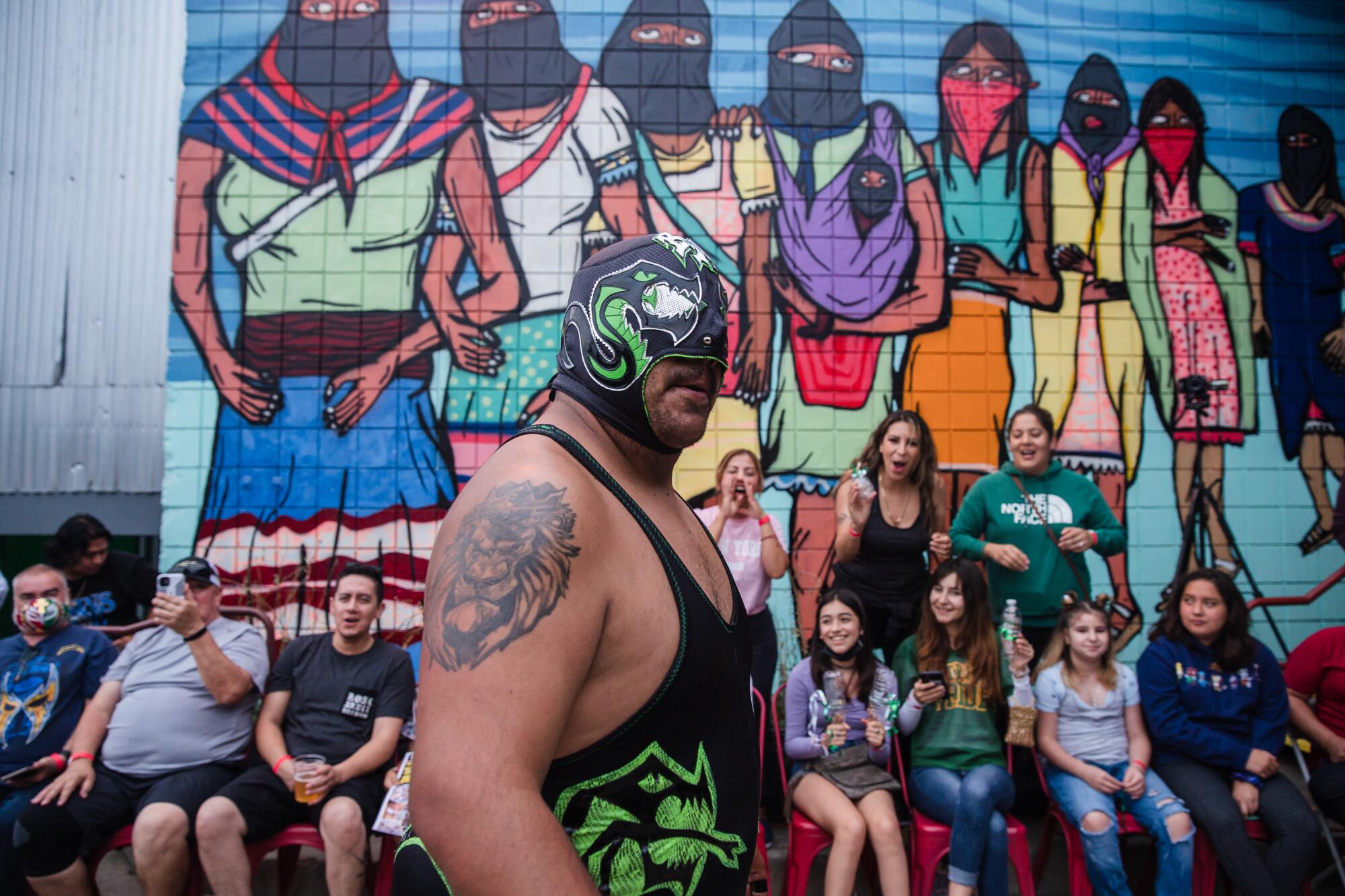
Avalos says he is also trying to hold down prices, to expose more people to Mexican wrestling.
It’s still lucrative, he said, and the luchadores get paid per match, but whereas pro wrestling tickets for a World Wrestling Entertainment event might cost as much as $1,000, the most Baja Stars USA charges is $25 for adults and $10 for children per match.
“At least we are not broke and have a good show people enjoy,” Avalos said.
Avalos said his plan is to draw international talent to San Diego to expose current and future fans to talented fighters and allow people who can’t travel to Mexico to experience a part of the country’s cultural fabric.
Lucha libre is a Mexican form of entertainment that is both sport and storytelling. Dating back to the 1900s, it evokes nostalgia among many who recall going to the matches in Mexico as children.
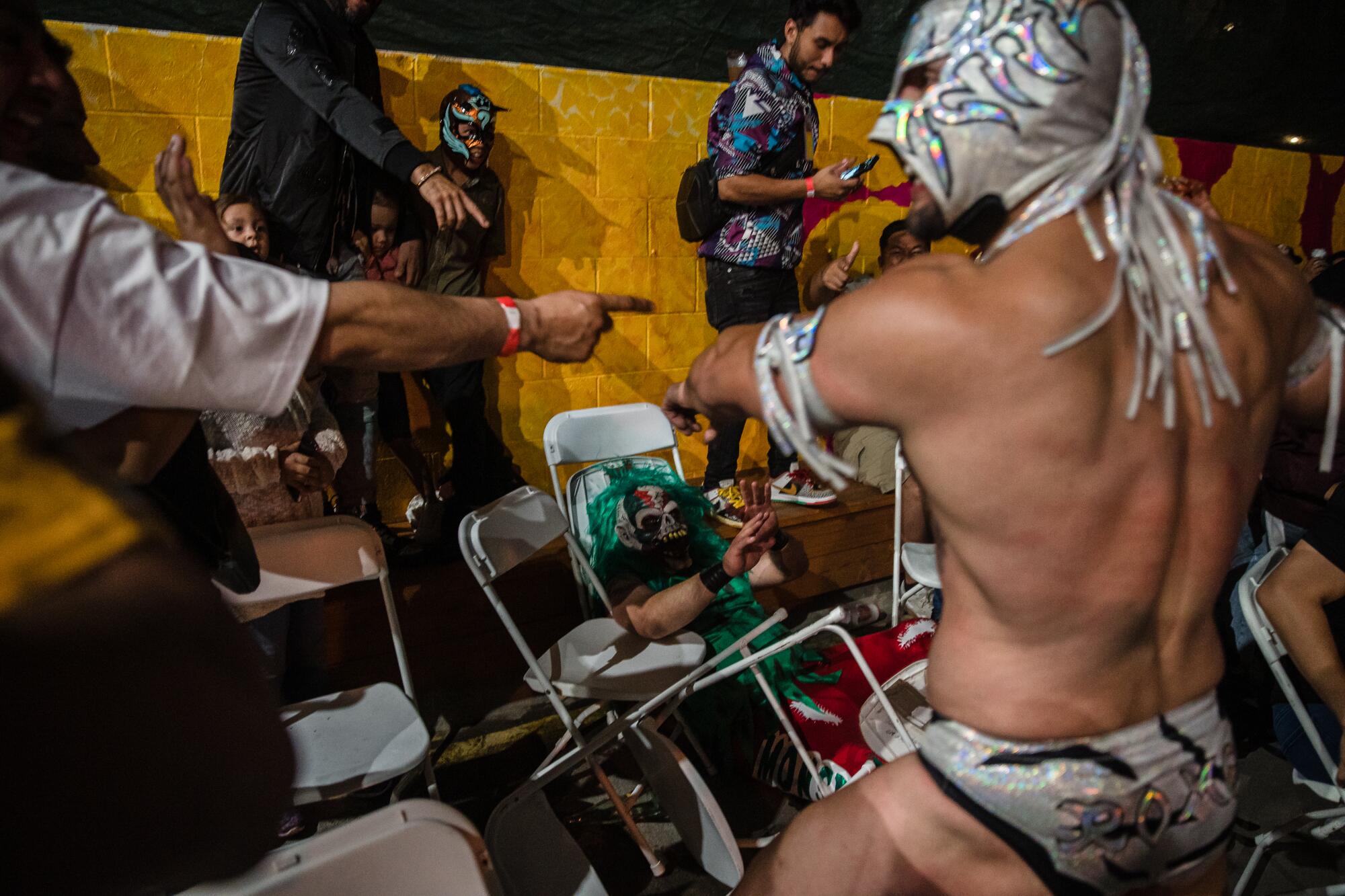

Luchadores are characters who often wear masks to hide their identities and colorful Lycra outfits. They perform an array of coordinated and spontaneous skills in the ring.
The King Rey Mysterio started training at age 14 as a way to separate himself from the bad crowds he had been hanging out with, he said. It wasn’t love at first sight, but over time he developed a passion for lucha libre, he said.
Now the 27-year-old Spring Valley resident works fulltime as a professional luchador, traveling the United States. He wears a mask and keeps his identity secret.
But when the pandemic shut down his wrestling gigs, The King Rey Mysterio got jobs in construction.
Now that things are opening up again, he is excited to be back at the job he loves, he said.
“People love this because lucha libre isn’t just a sport; it’s not just entertainment; it’s culture,” he said.
This was the first lucha libre event since COVID-19 shut them down last year. Some 250 fans filled the brewery’s outside patio to watch the 16 luchadores fight.
Groupings of young and old spectators surrounded the ring. Kids wore colorful luchador masks of their favorite fighters, and adults sipped beer and cheered and booed the fighters.
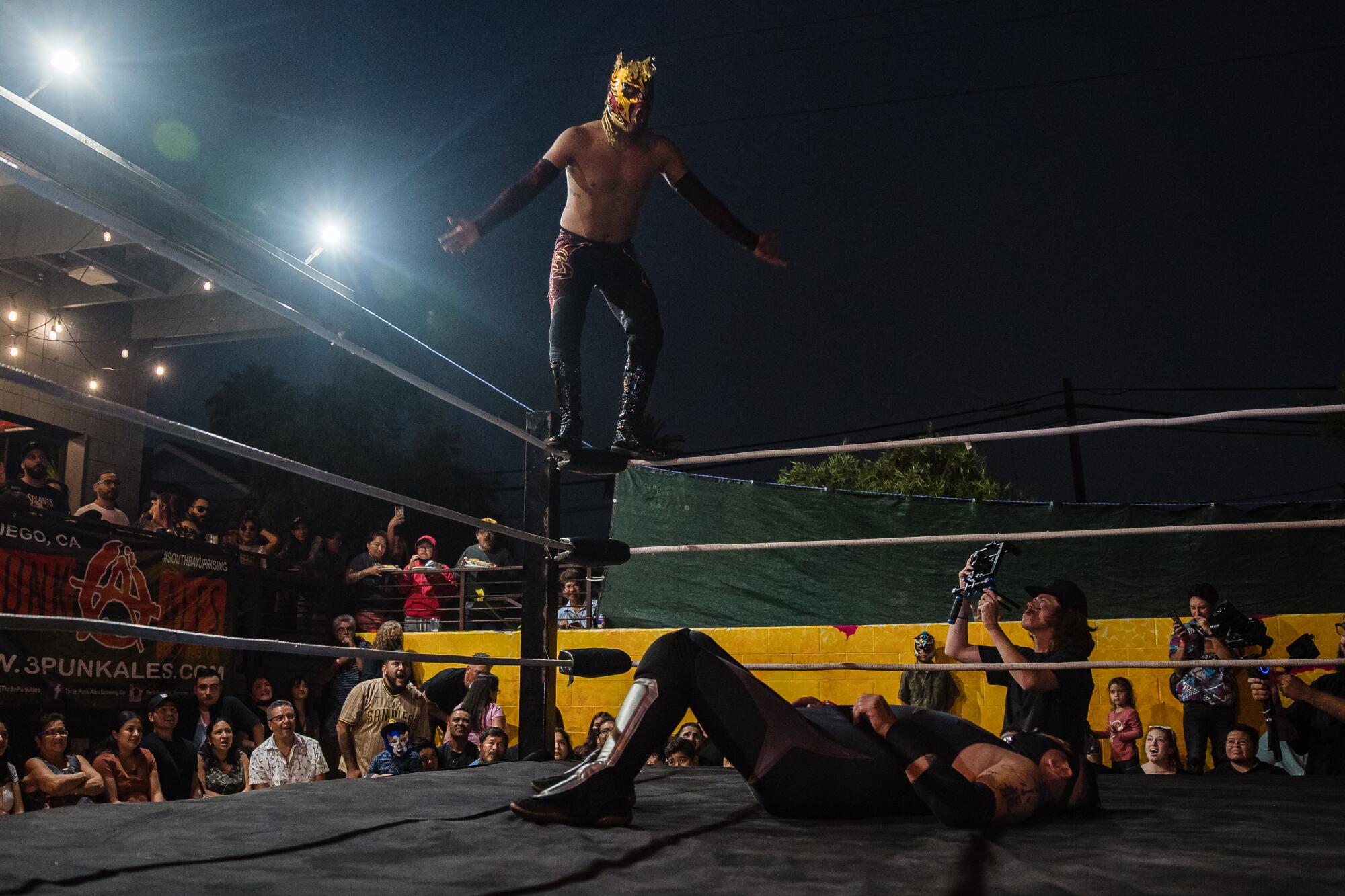
“Mátalo!” an older man in the crowd yells, as he shakes his fist in the air, saying it’s time to kill the opponent.
Heather Levi, an assistant professor of anthropology at Temple University in Philadelphia, spent more than a year training with a group of luchadores in Mexico in the 1990s. She wrote the book “The World of Lucha Libre.
The origins of professional wrestling in Mexico can be traced to the 1840s, she said, but the sport gained most of its popularity in the 1900s. Over the years, wrestlers often argued that lucha libre was part of Mexico’s national culture, but they weren’t taken seriously, she said. Over time lucha libre gained more recognition as the sport grew into an international sensation.
Mexico City gave lucha libre “Intangible Cultural Heritage” status in 2018. Now Lucha libre is imbedded in the cultural fabric of Mexican identity, Levi said.
She believes it’s the suspension of belief that keeps the audiences engaged.
It’s also a sport that hooks luchadores, she said. Some are born into wrestling families, so lucha libre is second nature, and others see it as a career opportunity.
“There is just something about it, if it grabs you, you just can’t stop,” Levi said.
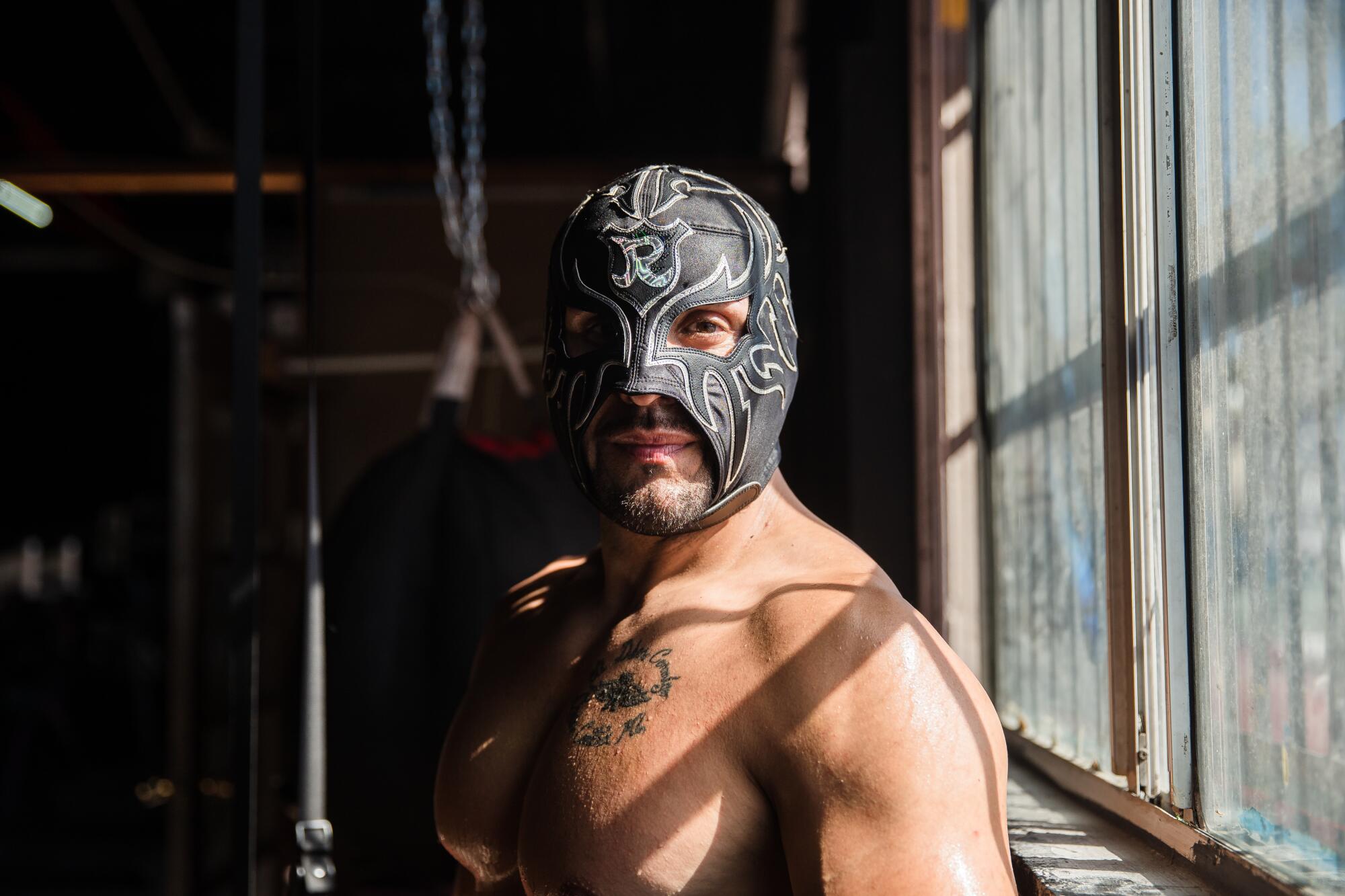

Henry Flores would agree. He drove from San Bernardino County to San Diego to watch the lucha libre matches with his 4-year-old and 9-year-old nephews. Watching his nephews’ reactions, cheering as one of the luchadores named Romeo jumped on another, resurrected memories for Flores of himself as a youngster going to a lucha libre event with his uncle, he said.
It brought on a feeling of belonging, he said.
“It was so special for me growing up,” Flores said. “ I wanted to offer them that, too.”
Romeo, a 35-year-old luchador, said later that when he was a boy he would often go to matches with his father and bond over the sport.
“I loved the luchas ... and I told my dad that I wanted to be a luchador; I wanted to be a star,” Romeo said. “I found what I was always looking for.”
Romeo has been a professional luchador for almost 10 years, but by day Romeo — not his real name — works as an attorney in Tijuana. He dedicates his afternoons to training and his weekends to participating in lucha libre matches.
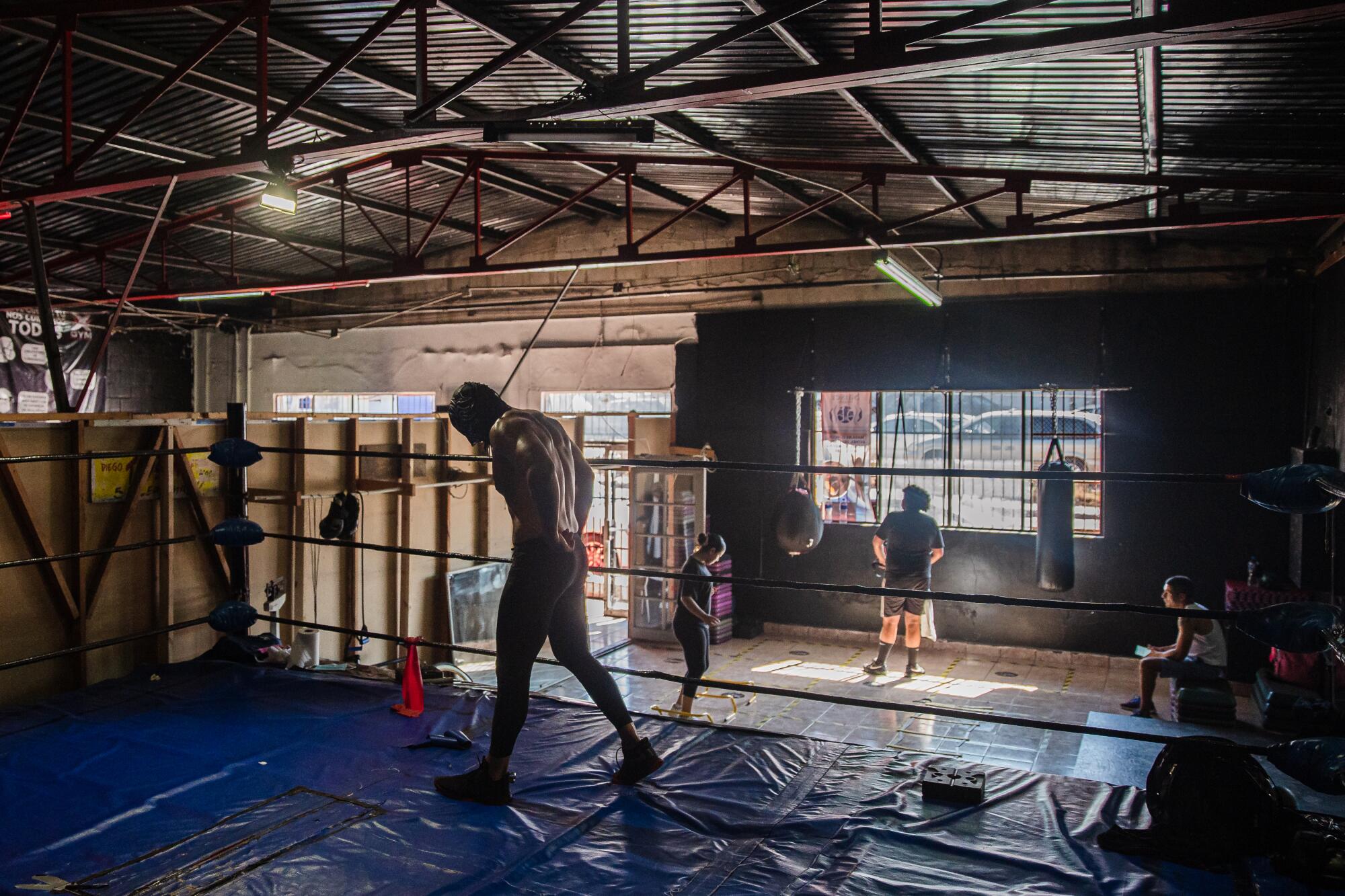

At the recent Saturday night match, Romeo jumped into the ring between fights, took off his shirt, and — pulling from his prior experience as a Chippendales dancer — he did some dance moves, rolling his abs and twerking, eliciting screams from women in the crowd.
Lucha libre allows him to step into a flirty, fun character who is adored by fans, he said, but in real life he’s a shy person. “Para mi, mi mayor pago es el carino del al gente,” said Romeo, saying his greatest reward is the crowd’s love.
“That’s the magic of lucha libre,” he said. “When you put on regular clothes, you’re a regular person. You’re not the person who people line up to take pictures with.”
It’s common to meet luchadores who work construction or who are line cooks, Uber drivers, bartenders and more, said Diego Luna, CEO of Baja Stars USA. Organizing lucha libre events gives these fighters an opportunity to improve and to step onto even larger stages, he said.
“It takes a special human being to do this,” Luna said. “It takes determination and heart to do it, just like anything else.”
Baja Starts USA’s next event is 6:30 p.m. Sept. 18 at Mujeres Brew House.
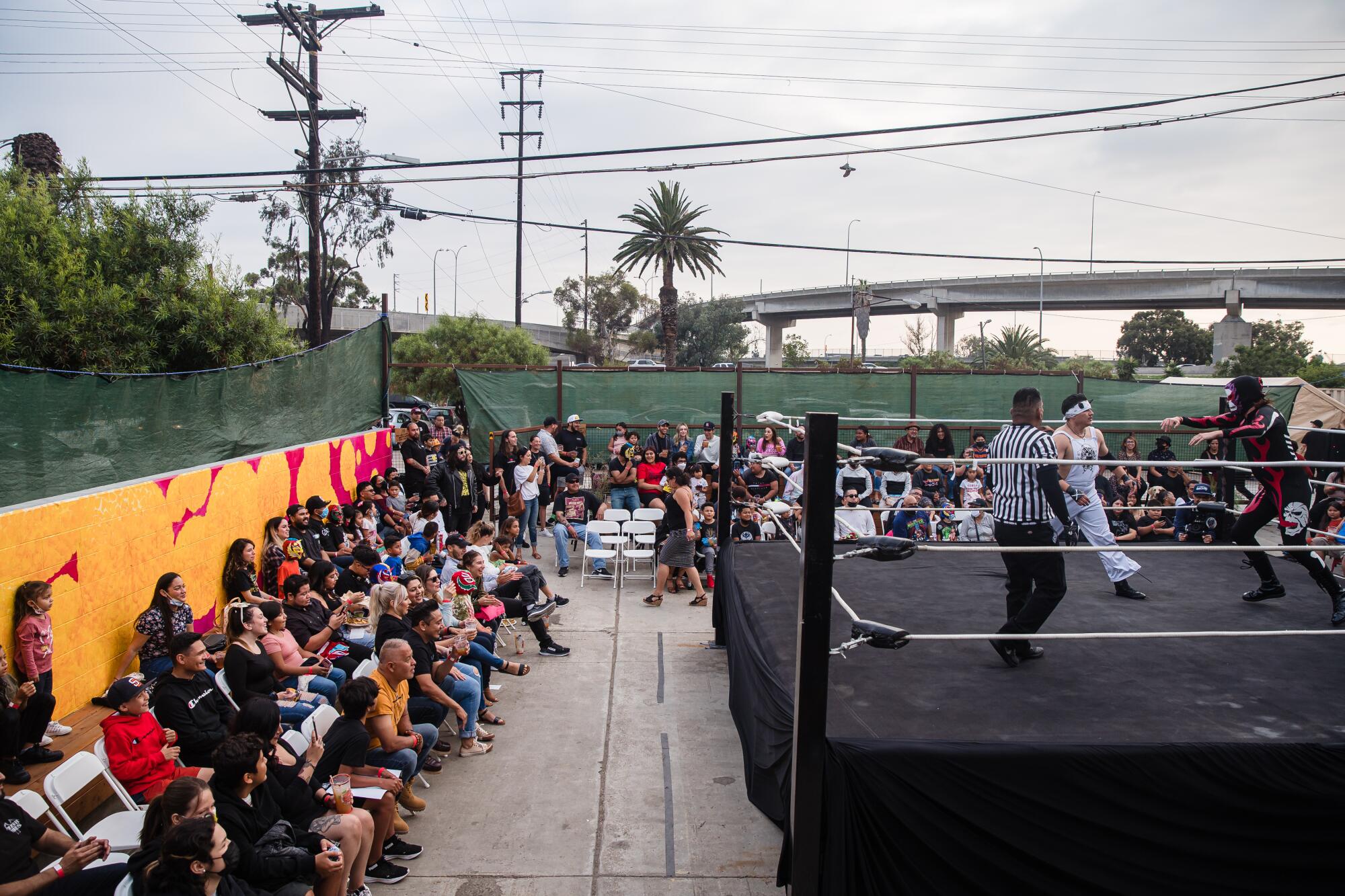
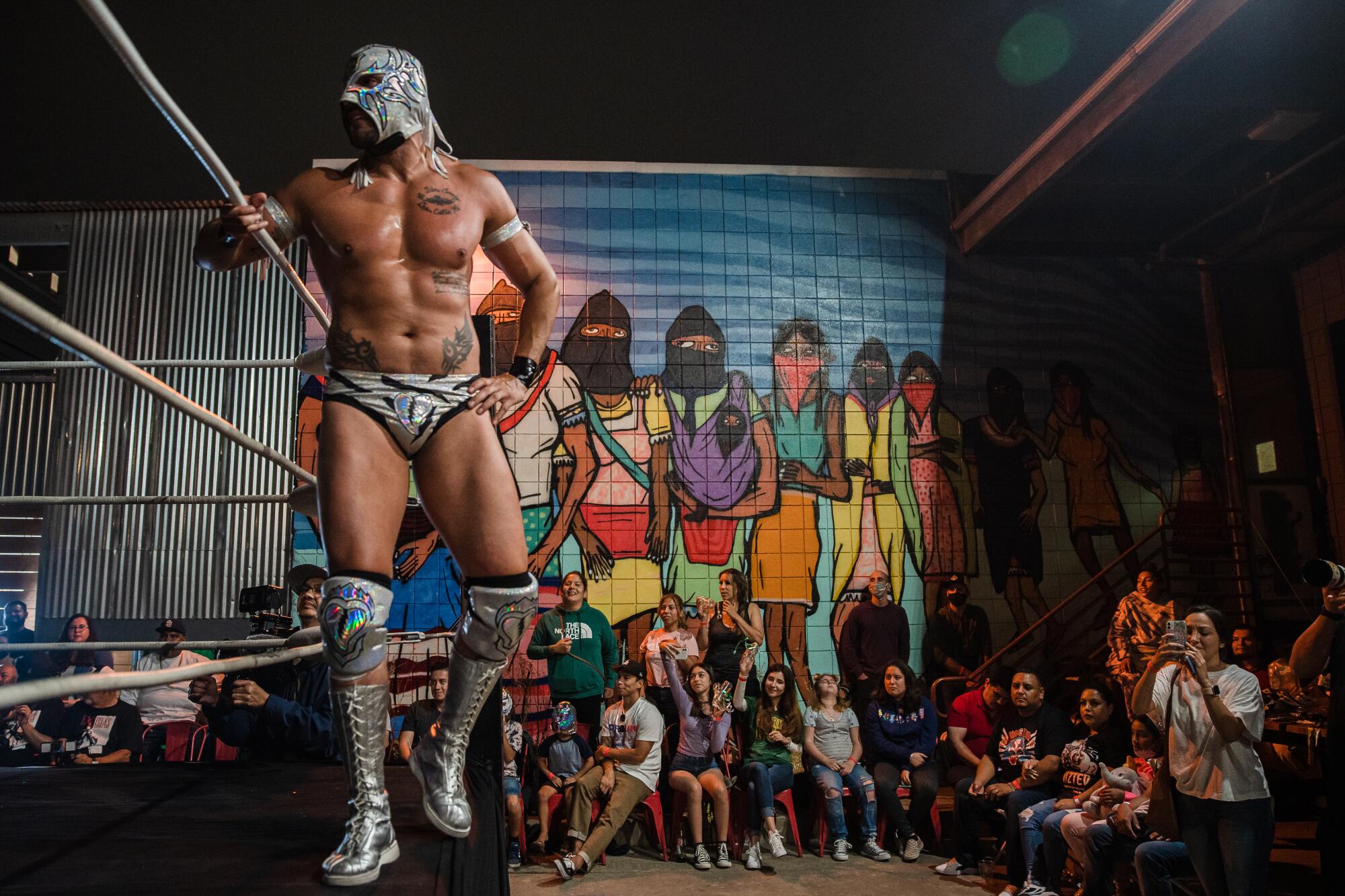
Top headlines by email, weekday mornings
Get top headlines from the Union-Tribune in your inbox weekday mornings, including top news, local, sports, business, entertainment and opinion.
You may occasionally receive promotional content from the San Diego Union-Tribune.
